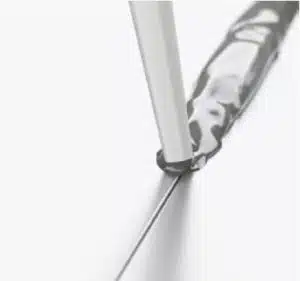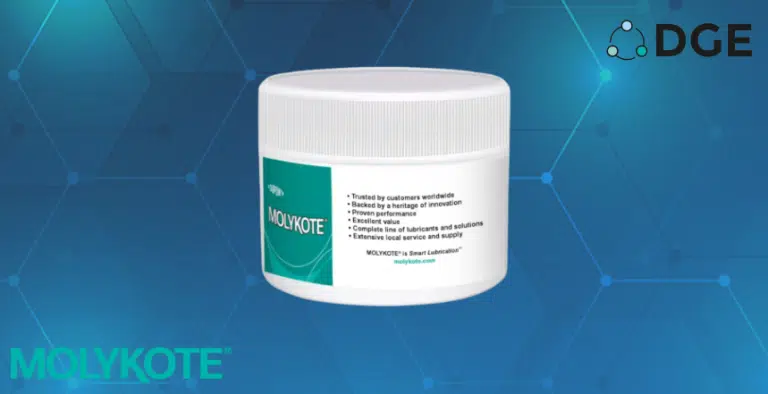Silicone Solutions for Industrial, Appliance and Maintenance
DOWSIL™ Silicone Sealants Silicon-based sealants from Dow last longer and are more versatile than most organic polymer sealants. They are durable RTV sealants; cure at room temperature to a tough, rubbery solid with exceptional performance characteristics; and meet a wide variety of your industrial bonding and sealing needs.
![]()
Benefits of DOWSIL™ silicone sealants include:
Stability over a wide temperature range When properly cured, most of our products can be used at temperatures ranging from -70 to 350°F/-56 to 177°C (400°F/204°C intermittent), with still others capable of higher thermal stability up to and exceeding 500°F/260°C (600°F/315°C intermittent).
Weather resistance
High resistance to ultraviolet (UV) rays, radiation and weather prevents our products from hardening, cracking, crumbling, drying and becoming brittle.
Chemical stability
Our sealants do not readily degrade, even under long-term exposure to many chemicals and atmospheric pollutants.
Good bond strength
Our products provide good adhesion to a wide variety of industrial materials, including glass, ceramics and wood masonry; painted surfaces; and many metals and plastics.
Electrical properties
Designed for a variety of applications, our products can be used in various electrical and electronic applications, including devices that are thermally cycled over a wide temperature range.
Low flammability
In fire conditions, silicone adhesives/sealants are reluctant to burn. Many products comply with UL flammability standards.
When you specify an assembly and maintenance product from Dow, you receive a solution backed by the world leader in silicone technology with more than 70 years of expertise and innovations.
Why Silicones?
For application versatility, durability, aesthetics and value, silicones outperform organics. Silicone sealants from Dow are unrivaled, delivering:
- Protection that typically lasts three times longer than organic materials in the same applications, thus avoiding premature and costly renovations
- Proven performance with successful track records in a range of diverse applications
- Outstanding life-cycle value
- All-weather application and performance, with resistance to UV exposure, ozone, rain, snow and extreme temperatures
- More durability than organic-based materials
- Continued flexibility and adhesion, even while being stretched or compressed
- Resistance to cracking, splits or tears without hardening or fading
- Easy application over a wide temperature range
Organics are prone to chemical reversion, a phenomenon in which organic polyurethane loses its cured properties and reverts to a substance with the softness of chewing gum. The differences
between silicones and organics are the difference between long-term value and premature failure. Silicones prevail.
Which Silicone?
Silicone sealants from Dow are offered in a wide range of formulation options, including:
RTV (room-temperature-vulcanizing) sealants:
These silicone polymers work with a condensation reaction in humidity at typical room conditions, but the cure can be accelerated by increasing
temperature and humidity. RTV sealants are easy to install, and they offer relatively low cost and good adhesion.
Heat cure sealants:
Delivering much shorter cure times than RTV sealants, these materials can be automatically dispensed to meet industrial equipment assembly requirements.
Hot-melt silicone sealants: 
Ideal for automated applications in the manufacturing of various components, these reactive hot-melt materials provide instant green strength, which can increase productivity, improve quality and reduce costs in industrial assembly applications.
Hot-melt, neutral-cure sealants are intended for assembly, bonding, sealing, gasketing and other OEM applications that require instant adhesion and high green strength.
These sealants feature:
- Excellent adhesion to most substrates without the need for a primer
- Instant adhesion, enabling parts to be shipped out quickly
- Long open time
- Long pot life
- Low VOC
- Safe handling with nonhazardous composition and by-products
- Long life once cured
One-part materials:
Containing all the ingredients needed to produce a cured material, these sealants use external factors – such as moisture in the air, heat or the presence of UV light – to initiate, speed or complete the curing process. One-part sealant formulations are easy to use and typically have a low- or room-temperature cure, but moisture-curing materials may take
24 hours or more to fully cure.
Two-part materials:
With the reactive ingredients separated to prevent premature initiation of the cure process, these materials often use the addition of heat to facilitate or accelerate cure. Two-part formulations typically offer longer shelf life, high-speed cure, and the ability to carefully control working/open time and cure time by manipulating the formulation, but they require mixing and may involve more sophisticated processes and application expertise.
Silicone foams:
Ideal as compression gaskets or as “environmental seals” to protect against ambient air, splashed water, dust and moisture, these materials are a costeffective sealing solution compared to preformed gaskets and foam tapes for use sealing high-tolerance gaps. Applied using automated robotic dispensing, these materials have a fast room-temperature or low-temperature cure.
Two-part, addition-cure silicone foams are designed to be dispensed and cured directly on parts to form an integrated compression gasket. They typically are used in automotive parts, including seals for vibration and noise damping, housings for electronic devices, exterior lighting, and domestic appliance components.
These sealants features:
- Room temperature cure (RTV)
- 1:1 mix ratio
- CFC-free content
- Low post-cure compression set
- Stability and flexibility across a wide range of temperature
Sealant Chemistry
Silicone sealants typically consist of an inorganic siloxane (Si-O-Si-O-Si) polymer and appropriate filler, crosslinker, catalyst, adhesion promoter, pigment and plasticizer.
To meet specific needs, silicone sealants are offered in a variety of chemistries and cure types, each with their own benefits. The following tables will assist you in selecting the right material to help meet your performance requirements.
Surface Preparation
Although DOWSIL™ silicone sealants possess excellent bond strength, maximum adhesion is only attained on surfaces that are clean and dry. Contaminants – such as dirt, grease, water, tar or rust – act as release agents and prevent the formation of durable bonds. Use of a primer does not negate the necessity for proper surface cleaning.
- Wet or dirty surfaces should be properly prepared before sealants are applied.
- Wipe contaminated surface with a clean, oil-free cloth.
- Rewipe surface with a suitable cleaner or industrial solvent, such as isopropyl alcohol (IPA), mineral spirits, naphtha or ketones. Note: Do not clean surface with detergent or soap. (Soap residue may act as release agent.)
- Rough rubber surfaces with sandpaper.
- Make a spot-check to determine the adhesion of sealants for each application.
- Bond strength will increase as the sealant cures.
The active ingredients must thoroughly wet-out and coat the bonding surfaces. Mild abrasion, solvent cleaning, plasma, corona discharge and other pretreatments have been used to clean and enhance surface reactivity to bonding. In general, light surface abrasion is recommended whenever possible, because it promotes good cleaning and increases the surface area for bonding.
Clean and/or degrease surfaces with DOWSIL™ OS Fluids, naphtha, mineral spirits, methyl ethyl ketone (MEK), or other suitable solvents that will remove oils and other contaminants that may be present. A final surface wipe with acetone or IPA also may be helpful.
Some cleaning techniques may give better results than others; determine the best technique for your application. For especially difficult-to-bond-to surfaces, it may be necessary to increase the surface reactivity by using chemical etchants or oxidizers or by exposing the surface to UV, corona, plasma or flame sources. Allow solvents to completely evaporate before applying the primer.
Primers and Adhesion Promoters
For maximum adhesion, DOWSIL™ brand primer is recommended. After solvent-cleaning, apply a thin coat of DOWSIL™ primer in a very light, even coat by wiping, dipping or spraying. Wipe off excess material to avoid overapplication, which generally appears as a white, chalky surface. When dipor spray-coating, diluting by a factor of 2 to 4 with additional solvent may avoid excessive buildup.
Primer Cure
At normal room temperatures and 50% relative humidity conditions, allow the primer to air-dry from five to 30 minutes. Low-humidity and/or low-temperature conditions require longer cure times. Mild heat acceleration of the cure rate may be possible, but temperatures above 140°F (60°C) are not recommended.
During application, the carrier solvent typically evaporates quickly, allowing the active ingredients to begin to react with atmospheric moisture and bonding surfaces.
For optimal bonding, different cure times may be required for different temperature and humidity conditions; determine the best cure schedule and conditions for your application. Apply the desired silicone sealant after the primer, prime coat or adhesion promoter has fully cured.
Sealant Application
Apply DOWSIL™ brand adhesives/sealants to one of the prepared surfaces, then quickly cover with the other substrate to be bonded. On exposure to moisture, the freshly applied material will “skin over” in about 5 to 10 minutes (depending on the product) at room temperature and 50% relative humidity.
Tool the sealant to coat or wet the substrate surface for maximum bonding. This typically is done by properly filling the joint first and then dry-tooling the sealant by pressing and pulling a round-tipped spatula or similar tool across the sealant surface. This step forces sealant into joint surfaces and helps remove air pockets or voids at the bond line. Tooling should be completed before the skin forms.
Keeping the primed surface clean may allow application of the silicone elastomer to be delayed – but in some cases, if too much time elapses, lower adhesion can result. Users are encouraged to determine the optimal cure conditions for their specific applications and the effects of any hold times imposed between applications of the primer and sealant. In some cases, it may be recommended to reprime surfaces if 8 to 24 hours elapse before the silicone sealant can be applied.
Cure Time
After skin formation, cure continues inward from the surface. In 24 hours (at room temperature and 50% relative humidity), DOWSIL™ adhesive/sealant will cure to a depth of about 1/8″. Very deep sections, especially when access to atmospheric moisture is restricted, will take longer to cure completely. Cure time is extended at lower humidity levels. Because the sealants cure by reaction with moisture in the air, keep the container tightly sealed when not in use. A plug of used material may form in the tip of a tube or cartridge during storage. This is easily removed and does not affect the remaining contents.
Compatibility
Some DOWSIL™ adhesives/sealants release a small amount of acetic acid during cure. This may cause corrosion on some metallic parts or substrates, especially in direct contact or when the cure is carried out in a totally enclosed environment that does not allow cure by-products to escape.
Platinum catalysts used in addition-cure silicone sealants – including silicone foams – are sensitive to contamination by certain compounds that have the power to stop or inhibit cure. For more information, refer to “Guarding against potential inhibitors/poisons of platinum-catalyzed addition-cure release coatings,” Form No. 30-1053-01, available on consumer.dow.com or upon request from Dow customer service.
Cleanup/Sealant Removal
Cured silicone can be removed from a surface with a sharp blade if the cured silicone material is accessible. If it is difficult to cut through, solvents – such as IPA, toluene, xylene, naphtha or mineral spirits – may be used to soften the cured sealant. DOWSIL™ OS Fluids also can be used to help soften cured silicone and/or remove silicone residue after it has been removed mechanically from a surface. DOWSIL™ OS Fluids will generally be a lower-VOC alternative to standard solvents.
Health and Environmental Information
To support customers in their product safety needs, Dow has an extensive Product Stewardship organization and a team of Product Safety and Regulatory Compliance (PS&RC) specialists
available in each area.
Limitations
Refer to individual product data sheets for use limitations.
Font: DOWSIL™ Silicone Sealants and Foams for Industrial, Appliance and Maintenance Selection Guide






